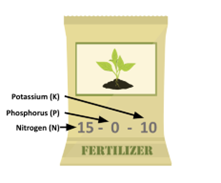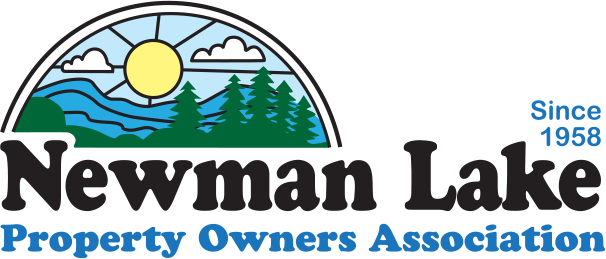Tip #1: Rethink Your Fertilizer Plan!
While lawns and gardens need nutrients for health, the timing of your application and the nutrient load are important to understand. Too much fertilizer along with bad timing feed algae in our lake and we all want a LONG swimming and boating season!
While traveling for work last spring, I had the privilege of touring a soil and water testing laboratory. While giving the spiel about his company, the owner said, “You don’t overfill your gas tank. When it is full, you stop. If you didn’t, you would spill it everywhere and make a mess. The same should be said about fertilizers: there is only so much that the plants can uptake. After that you are just spilling nutrients into the soil that cannot be absorbed and making a mess“. Grass can only absorb so much fertilizer. Keep that in mind as you are preparing your springtime soil amendments. Over-fertilizing doesn’t make the grass greener; it merely ends up feeding the algae in our lake.
Many would argue that it’s best NOT to fertilize your lawn and gardens, but if you must, use a phosphorous free product to green your lawn, but when I asked my horticulture specialist (Pat), he had a more detailed answer and educated me a bit.
The numbers on your fertilizer bags, in order, are the amount of N-P-K.

Nitrogen (N): helps with top growth.
Phosphorus (P): helps with root development, especially going into the winter months.
Potassium (K): helps with overall health.
Pat shared that if a 50# bag of fertilizer contains more than 6% Phosphorus, most is lost to leaching. Below 6% P, lawns can take advantage, uptaking those nutrients. Organic fertilizers also contain naturally occurring P. The organic fertilizer Pat sells has a ratio of 5-3-2.
NEVER are we recommended to use fertilizer containing above 6% P. No triple 16 or 10-52-0: lawns are not able to take advantage of such a nutrient load. More isn’t always better. By using too much we are wasting our money and harming the environment.
In the spring, Pat says that it is fine to skip P for your existing lawns. The only time that using P is suggested (a little bit, remember) for the health of your grass is late summer/ early fall.
If you are hiring out the management of your lawn, make sure to question the company’s products and practices. There are a plethora of landscaping companies to choose from.
PT 1: Spring fertilizing should be done between Easter and Memorial Day, after spring cleanup, raking, etc. The grass needs to be growing before you fertilize; dormant grass can’t uptake nutrients.
Instead of fertilizer, you could always try overseeding using drought tolerant grasses (or clover, like the hippie next door).
PT 2: Slow-release N, around July 4th helps plants throughout the summer. If you are not watering your grass, do not fertilize.
PT 3: After Labor Day–a little bit of phosphorus to help make it through the winter. If in drought and not watering, wait. If your ground is frozen and your grass dormant, don’t waste your fertilizer.
If you have questions about the management of your yard and lawn, feel free to call Pat yourself. He is full of good information.
Patrick Zimmer
Pineview Horticultural Services, Inc
10188 N. Taryne St
Hayden, ID 83835
Office 208-772-7294
pineviewhort@live.com

Recent Comments